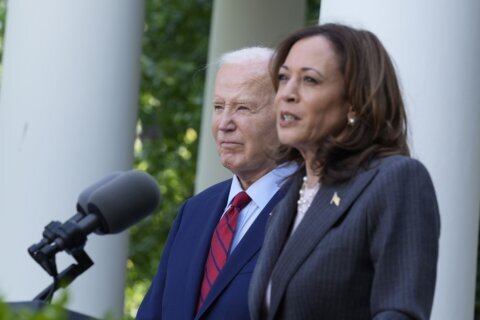Fidelity and Charles Schwab are two of the titans in the investment firm industry. Fidelity is the investment house of choice for more than 50 million customers, while Charles Schwab is the brokerage of choice for more than 35 million client accounts. Both firms are enormous; Schwab boasts more than $8.8 trillion in client assets, while Fidelity has $13.7 trillion in assets under administration.
[Sign up for stock news with our Invested newsletter.]
Both of these brokerage firms offer low-cost exchange-traded funds, or ETFs, and index funds that are among the best in the industry. You’ll be working with a solid company regardless of which one you choose, but there are a few differences between these investment stalwarts.
Weighing these factors can help you make the right decision for your finances:
— Account and investment options.
— Performance and cost.
— Management options.
— Functionality and tools.
— Overall appeal.
Account and Investment Options
You’ll have plenty of options with either brokerage firm, and if you buy individual stocks, you won’t have to worry about trading fees. Investors can even buy fractional shares of their favorite companies.
Fidelity and Schwab both offer thousands of no-load, no-transaction-fee mutual funds and ETFs with low minimum investments. You can accumulate shares in many of these funds with as little as $1. Charles Schwab partners with T. Rowe Price to showcase additional actively managed mutual funds to expand your pool of choices.
Both firms offer options and charge a 65-cent fee for each contract you trade. However, each platform offers some investment opportunities that you won’t find on the other. Fidelity is the brokerage firm for you if you want to trade cryptocurrencies, while Schwab is the right choice if you want to trade futures.
Schwab is the only brokerage firm of the two that offers futures, but that’s not the only reason traders may want to consider Schwab over Fidelity. Misty Garza, vice president and financial advisor at Bogart Wealth, explains Schwab’s advantage here: “Schwab has a customizable trading platform called Thinkorswim for those active traders who want robust tools and customization of complex strategies and techniques.”
There isn’t much of a difference for long-term investors. Fidelity and Schwab offer several retirement plans, such as traditional and Roth IRAs, individual 401(k) plans, SEP IRAs and rollover IRAs. They also both let you buy bonds, insurance and annuities.
Performance and Cost
Past performance is not a guarantee of future outcomes, but Fidelity and Schwab both have funds with respectable returns. Several of their mutual funds and ETFs have good performances over the past one, five and 10 years. Investors should review each fund’s fees, historical performance and asset allocation to gauge how they may perform in the future.
A history of steady performance indicates less volatility than a fund that has significant performance swings over the course of several years. Comparing a fund to an appropriate index can help you gauge if the fund is performing well or falling below expectations.
Growth-oriented investors may want to compare a fund’s performance to the S&P 500 or the Nasdaq composite. These same benchmarks don’t apply to investors who want exposure to fixed-income assets. Investors can compare fixed-income funds against each other to determine which one has the best long-term returns and current holdings.
Management Options
Fidelity and Schwab investors can choose from active, passive and robo-advisor management options. There aren’t many differences between each brokerage firm’s active and passive management, but the robo advisors have some nuances.
Active Management
Investors who buy shares of actively managed funds can expect higher fees regardless of which brokerage firm they use. Fidelity and Schwab offer many actively managed funds, but Schwab has an expanded offering due to its partnership with T. Rowe Price. Schwab receives compensation for promoting T. Rowe Price’s funds.
While actively managed funds aim to outperform benchmarks, it’s easier said than done. Most actively managed funds end up underperforming the benchmark, and the higher fees don’t help.
Elevated expense ratios mean you keep less of the profits, and it is possible to find expense ratios above 1% for actively managed funds.
Passive Management
Passively managed funds have lower expense ratios since they copy popular indexes instead of trying to do something new. Rather than try to outperform the S&P 500, some funds mimic the S&P 500 and go through semiannual portfolio rebalances.
Fidelity and Schwab both offer these funds, and you can find expense ratios below 0.1%. If you want a simpler approach to investing, passively managed funds may be right for you.
“Passive management is good for those who want to be able to have a hands-off approach to their investments,” Garza says. “Passive management is typically geared toward index investing and offers low-cost investment options.”
A passive approach makes it easier for more investors to enter the market and generate a return on their capital. You don’t have to monitor individual stocks, analyze valuation metrics or pore over earnings reports. The learning curve is more generous for passive investors who prefer to put their capital into a fund that mirrors a benchmark, then set it and forget it.
Robo Advisors
Robo advisors allow you to make algorithm-based investments. This software lets you set rules that align with your risk tolerance, portfolio strategy and other parameters. Then, the robo advisor executes trades on your behalf.
These robo advisors allow investors to be more active in the stock market without spending as much time staying on top of price fluctuations. However, it’s still good to monitor your robo advisor to ensure the rules you established still match up with your long-term financial goals.
Fidelity and Schwab both offer robo advisors. However, it’s easier to get started with Fidelity since the firm does not have a minimum investment requirement to open an account. You must have at least $5,000 to open a robo-advisor account with Schwab. Schwab does not have an advisory fee for its robo advisor, though, which is a key advantage.
Fidelity has no advisory fees for balances of less than $25,000. A 0.35% advisory fee applies each year if your portfolio is $25,000 or more. The extra fee includes unlimited one-on-one coaching calls. Schwab offers 24-hour customer service, but it also offers a Premium option for accounts of $25,000 or more that gives you access to one-on-one guidance from a certified financial planner for a one-time planning fee of $300 and a monthly fee of $30 after that.
Functionality and Tools
Beginners and advanced investors can turn to Fidelity and Schwab for an array of useful tools and resources. Thinkorswim gives Schwab an edge for traders over Fidelity’s competitive Active Trading Pro. Both platforms offer advanced stock screeners and trading tools that can help you discover enticing investment opportunities.
Overall Appeal
Fidelity and Schwab are both excellent choices. These investment firms offer thousands of funds. Each company offers 24/7 live support with financial professionals.
There are some nuances, such as Fidelity being better for crypto traders and Schwab being more optimal for futures traders. Fidelity’s robo advisor is better for investors who are getting started, but Schwab may be more affordable if you have a higher balance.
Passive investors can pick either firm, but if you want to take a more active, trading-based approach, Schwab’s Thinkorswim platform is hard to beat. Both brokerage platforms are reliable choices for investors.
[READ: Will the Stock Market Crash in 2024? 6 Risk Factors]
More from U.S. News
The Indian Stock Market: How to Invest in the World’s 5th-Largest Economy
What Is Par Value for Stocks and Bonds?
How to Recover After a Loss in the Stock Market
Fidelity vs. Charles Schwab: Which Is the Right Choice for You? originally appeared on usnews.com







